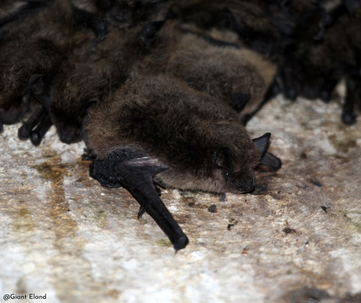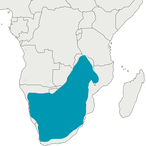The long-tailed serotine bat or long-tailed house bat (Eptesicus hottentotus) is a species of vesper bat found in Kenya, Lesotho, Malawi, Mozambique, Namibia, South Africa, Zambia, and Zimbabwe.
|
It is a medium-small bat with its pelage colour varying geographically, with individuals from Namibia and the Northern Cape much paler than those from the east. In the west, it is fawn or sandy-brown above and grey-cream below. In the east, it is dark brown above and paler below. The individual hairs are long and bicoloured with a dark base and pale tip. The wings are dark brown. The ears are brown and moderately sized, with a short tragus with a rounded tip. The sexes are alike, with females slightly larger than males.
Owing to its large size, it is unlikely to be confused with any of the other pipistrelloid species in southern Africa, which are all significantly smaller. |
Mass: 16 g
Forearm length: 47 mm Wing loading (weight / wing area): 10.3 N.M-2 Aspect ratio (wing length / breadth): 6.3 Peak echolocation frequency: 30.6kHz |
Unknown information
No threat and reproduction information is currently available.
No threat and reproduction information is currently available.
References




